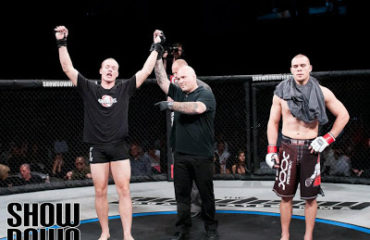MMA – mixed martial arts – is a sport that has consistently grown in popularity over the past couple of decades. In fact, nearly half of the viewing audience for MMA fights is between the ages of 18 and 35, and those people are talking with other enthusiasts, making MMA the third most popular sport discussed on social media, right behind soccer and basketball.
Many people are interested in getting into MMA as a hobby, a sport, and as an income source. However, just as importantly, more people are doing MMA to improve themselves. MMA can help with improved self-discipline, increased confidence, improved functional strength, and when using it as a workout, it can allow you to burn calories at a very high rate – as many as 600 in a 45-minute time span.
What is MMA?
MMA is a full-contact combat sport that combines different martial arts styles. Martial arts have been around since the ancient Olympic games, but it is enjoying growing popularity. Like similar sports in ancient Olympics, present-day MMA takes place in an octagon or cage, which is between 20 and 32 square feet.
An MMA fight consists of “rounds,” but the number of rounds can vary. According to the Unified Rules of Mixed Martial Arts, each round should be five minutes in length with a one-minute rest period between rounds. A bout can consist of anywhere between one and five rounds, and no fight can exceed five rounds (25 minutes total).
Several fighting styles are used by MMA fighters in their bouts. The combatants may use skills from boxing, jiu-jitsu, judo, karate, kickboxing, kung fu, taekwondo, and even wrestling. The combatants in an MMA match use punches, kicks, chokes, throws, and takedowns to achieve victory.
There are several ways that a fight can end and a winner declared. If a fight goes to the end of the scheduled rounds, the decision of a winner is made by the judges. A winner may also be declared by knockout if his opponent loses consciousness during the fight. Sometimes, one fighter will engage in a submission hold, and his opponent “taps out,” which is a sign of giving up; in the case of such a submission, the referee stops the fight.

MMA Training
There are three main components of MMA training: striking, grappling, and submission. Let’s take a closer look at each of these and consider the training needed.
- Striking is exactly what it sounds like – it is generating force with a punch, a kick, or a knee. There are specific striking techniques that, as a beginner in MMA, you would work on with a trainer; you don’t simply start hitting and kicking as you may have done in playground fights years ago. In a training class, you might do striking drills that are light, fast, and simple. Then, you would likely engage in sparring with a partner. The goal of sparring is not to achieve a knockout or submission as you would in a match, but to try to score points as if your sparring rounds were going to be evaluated by judges.
- Kicking comes to MMA through martial arts styles like karate, taekwondo, and Muay Thai. These styles feature short, snapping motions or longer kicks through rotation of the hips. Very little in MMA is more exciting than a well-placed roundhouse kick. Front kicks are less common than roundhouse kicks, but they can be very effective. Kicking is a very powerful weapon in MMA, but they also are a higher-risk move than punching. MMA training classes offer you practice in increasing your kicking speed, power, and accuracy.
- Submission usually involves some sort of wrestling-style or jiu-jitsu-style holder that one combatant places on his or her opponent. Holds like the rear-naked choke, the guillotine choke, the armbar, and the triangle choke often result in submission, as the person to whom these are applied may begin to lose consciousness or be in such pain that they tap out. In MMA training classes, participants learn how to control their opponents on the ground and then encourage them to submit through choke holds, arm locks, and leg locks.
Absolute MMA offers a wide variety of classes that can help you train all of these mixed martial arts skills. You might simply want to increase your fitness and conditioning, and there are classes for that. You might want to learn Brazilian jiu-jitsu, kickboxing, or other mixed martial arts; there are classes for that! What if you want to enroll your young person in MMA classes? There are classes for kids ages 5-7, ages 8-12, and ages 13-17.
How Much are MMA Classes?
Given the benefits of MMA training and how much there is to learn, you might think that MMA classes are incredibly expensive. That is definitely NOT the case! In order to serve all MMA enthusiasts, Absolute MMA offers a range of membership and pricing options.
You might choose a month-to-month option, which gives you full access to all classes without a long-term agreement. If you are fully committed and want to have a membership at a discounted rate, consider a 1-year or 2-year membership. There are family memberships for families of 3 or more who would like to train in MMA, and there are discounts for law enforcement, military, and first responders who want to train. Finally, if you are not 100% sure that MMA is for you, and you just want to try it out a bit first, you can purchase a “punch pass” card for ten classes for only $175.00 or daily visitor rates are available for $20.
There are some other special opportunities for MMA classes with Absolute. If you would like private training lessons, those are available in packages of 5, 10, and 20. Just contact Absolute MMA to schedule those.
Sign Up for Classes Now
If you would like to join the millions of MMA enthusiasts worldwide and check out one of the most popular sports in the world, sign up for classes now! You can do this by filling out the “Contact Us” information listed on the Membership tab of the Absolute MMA website or by emailing us at absolutemma@gmail.com.









